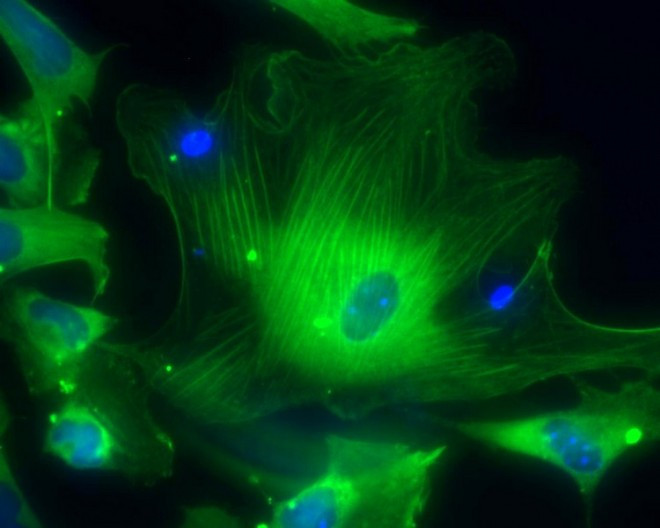Human Stomach Made in the Lab Using Stem Cells

In a first, a miniature stomach was created in the lab by scientists using stem cells.
Pluripotent stem cells that can grow into any cell type were used by scientists at Cincinnati Children's Hospital Medical Center to generate the artificial stomach.
The scientists identified the steps in stomach formation in the human embryo and by manipulating these in a petri dish were able to coax the stem cells to form a mini stomach measuring 3 mm in diameter.
They then studied how h.pylori bacteria affected stomach tissues and spread rapidly. The bacteria is responsible for peptic ulcer and stomach cancer.
This first-time molecular generation of a 3D human stomach (called gastric organoid) presents new opportunities for drug discovery, modelling early stages of stomach cancer and studying some of the underpinnings of obesity related diabetes, according to Jim Wells, PhD, principal investigator and a scientist in the divisions of Developmental Biology and Endocrinology at Cincinnati Children's.
The work was conducted in collaboration with researchers at the University of Cincinnati College of Medicine.
The discovery of how to promote formation of three-dimensional gastric tissue with complex architecture and cellular composition is important as mouse models are sometimes not the best fit when studying human ailments, the team said.
The human gastric organoids will be useful to identify biochemical processes in the gut that allow gastric-bypass patients to become diabetes-free soon after surgery before losing significant weight.
Obesity fuelled diabetes and metabolic syndrome are public health challenges, addressing which has been difficult due to lack of reliable laboratory modelling systems.
The study was published in Nature.
Stem cells are the body's growth and maintenance units that differentiate into the various cell types to build organs. At later stages, they are used by the body to replace damaged tissues.
© Copyright IBTimes 2025. All rights reserved.





















